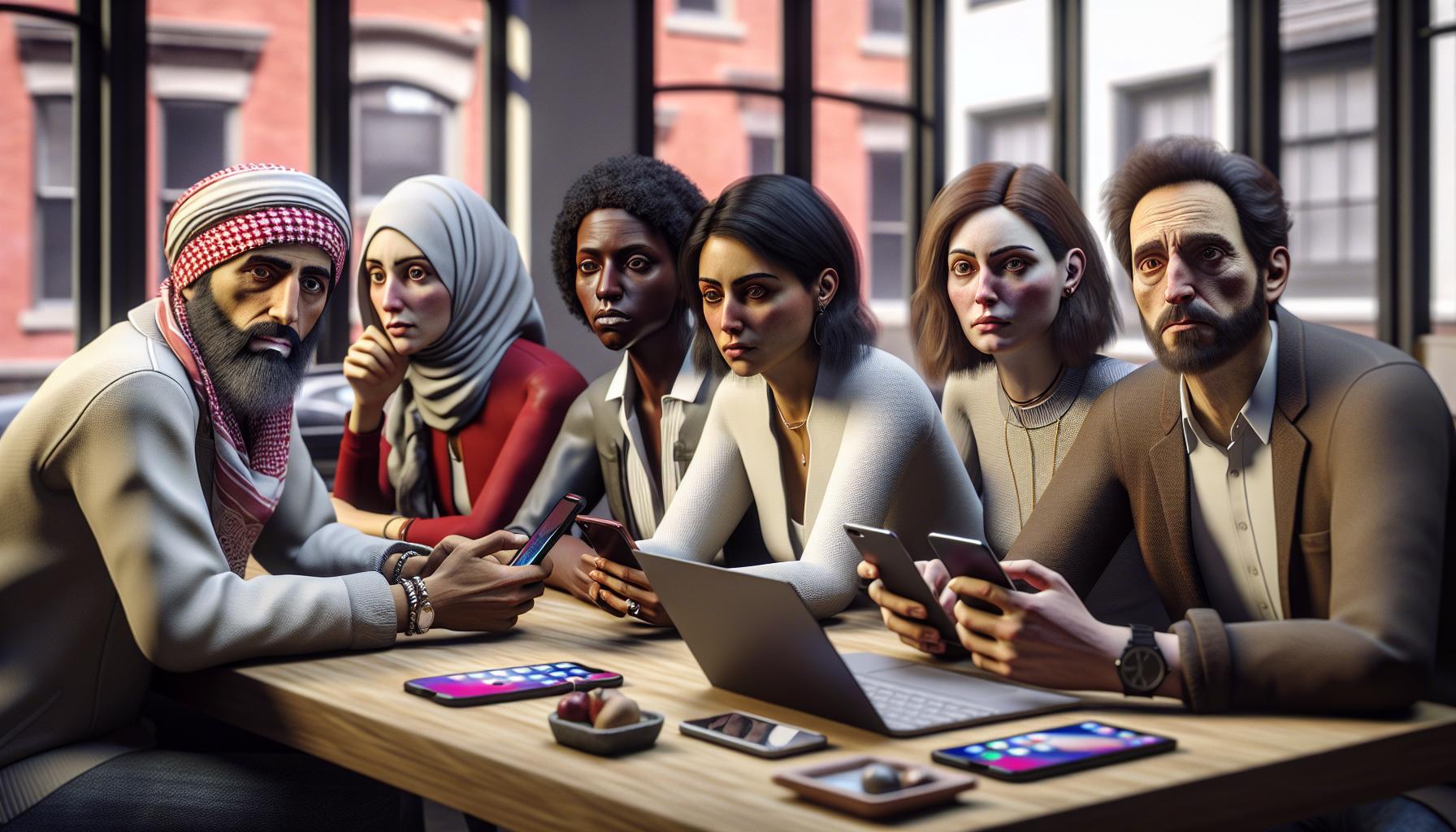In today’s digital landscape, social media plays a pivotal role in how people connect, share, and communicate. However, the rise of misinformation, cyberbullying, and privacy concerns has led to growing calls for social media restrictions. These measures aim to create a safer online environment while balancing the need for free expression.
Governments and platforms are grappling with how to implement effective regulations without stifling creativity and open dialogue. As debates heat up, understanding the implications of these restrictions becomes crucial for users and policymakers alike. Exploring the reasons behind these limitations sheds light on the evolving nature of social media and its impact on society.
Key Takeaways
- Definition of Social Media Restrictions: Social media restrictions are regulations that manage online behavior to ensure user safety, including measures like content moderation and age limitations.
- Rising Need for Regulations: Growing concerns over misinformation, cyberbullying, and privacy issues have increased the demand for social media restrictions, aimed at creating a safer online environment.
- Balancing Act: Governments and platforms face challenges in implementing effective restrictions without infringing on free expression, leading to ongoing debates about censorship and user rights.
- Impact on Freedom of Speech: Restrictions often spark discussions around censorship; while they may protect users from harmful content, they can also suppress legitimate discourse and dissenting opinions.
- Economic and Social Effects: Social media restrictions influence marketing strategies, user engagement, and can lead to social polarization, affecting how individuals interact and form communities online.
- Global Perspectives: Different countries adopt varying approaches to social media restrictions, showcasing a spectrum of effectiveness and challenges that highlight the complexities of regulating digital spaces.
Social Media Restrictions
Social media restrictions involve regulations and policies implemented to manage online behavior. These measures aim to create a safer digital environment while balancing free expression.
Definition and Overview
Social media restrictions refer to limitations placed on the use, accessibility, or content generated by social media platforms. These restrictions often include age limitations, content moderation policies, and banning specific behaviors like harassment or hate speech. Regulatory bodies, governments, and social media companies create these restrictions to protect users from harmful interactions and misinformation. Examples include banning accounts that violate community guidelines or curbing the spread of false information through fact-checking initiatives.
Historical Context
The evolution of social media restrictions traces back to the early days of the internet. Initial regulation focused on copyright issues and online safety for minors. As social media platforms grew, lawmakers responded to challenges like cyberbullying and privacy breaches. Events such as the Cambridge Analytica scandal in 2018 heightened public awareness of privacy concerns, prompting governments to propose stricter regulations. Notable regulations include the General Data Protection Regulation (GDPR) implemented in the European Union, which sets standards for data privacy and user consent. As social media continues to evolve, the historical context shapes ongoing discussions surrounding effective restrictions to foster a safer online experience.
Reasons for Implementing Social Media Restrictions

Implementing social media restrictions occurs for various reasons, including national security, the protection of minors, and the prevention of misinformation. Each of these areas highlights the necessity for regulations in the digital landscape.
National Security Concerns
National security concerns often prompt governments to impose social media restrictions. Terrorist groups and hostile entities utilize social platforms for recruitment, propaganda, and coordination. Countries recognize the necessity to monitor and limit these activities to safeguard public safety. Evidence shows that unchecked online activity can lead to real-world violence, making it critical to enforce policies that prevent the misuse of social media in these contexts.
Protecting Minors
Protecting minors serves as another significant reason for social media restrictions. Young users frequently face exposure to inappropriate content, cyberbullying, and online predators. Age limitations and content moderation policies aim to create a safer online environment for children and adolescents. Research indicates that exposure to harmful content can lead to psychological issues, underscoring the importance of implementing protective measures that prioritize youth safety on social platforms.
Preventing Misinformation
Preventing misinformation stands as a vital objective behind social media restrictions. The rapid spread of false information can distort public perception and influence elections or public health responses. Governments and platforms have begun to implement fact-checking initiatives and content filtration systems to combat this issue. Studies suggest that misinformation significantly impacts decision-making, highlighting the need for robust strategy development against misleading content within social networks.
Impacts of Social Media Restrictions

Social media restrictions generate significant impacts across various sectors, influencing freedom of speech, the economy, and social dynamics. Understanding these effects provides insights into the necessity and implications of such measures.
Effects on Freedom of Speech
Social media restrictions limit users’ freedom of speech, leading to ongoing debates about censorship. Proponents argue restrictions protect users from harmful content and misinformation. Critics, however, assert that these measures suppress legitimate expression, stifling dissent and critical perspectives. In some instances, vague moderation policies result in arbitrary content removal, which exacerbates concerns regarding the chilling effect on open discourse. For example, platforms that censor political speech may inadvertently favor particular narratives while marginalizing opposing viewpoints.
Economic Consequences
Social media restrictions affect the economy by influencing marketing strategies and user engagement. Businesses rely heavily on social media for advertising, and restrictions can limit their reach and effectiveness. Companies may face increased costs due to the need for compliance with evolving regulations, especially smaller businesses that lack resources to adapt quickly. Moreover, restrictions can lead to decreased user activity, which reduces advertising revenue for platforms. The overall economic landscape shifts as brands navigate these challenges, often curtailing investments in digital marketing efforts.
Social Implications
Social media restrictions impact social interactions and community cohesion significantly. Users may experience heightened polarization as algorithms prioritize content aligned with their views, reinforcing existing biases. Such dynamics can lead to echo chambers, diminishing the diversity of opinions shared online. Younger users, who rely on social media for connection and learning, may find restricted content limits their exposure to varying perspectives, affecting their worldview and social skills. Furthermore, these restrictions may exacerbate social isolation, particularly among marginalized groups seeking support and community online.
Case Studies of Social Media Restrictions

Case studies illustrate how social media restrictions manifest globally and their varying degrees of effectiveness. Analyzing specific instances provides insight into the complexities surrounding regulation and user freedoms.
Country-Specific Examples
- China: China enforces strict censorship through the Great Firewall, limiting access to platforms like Facebook and Twitter. The state monitors online activity, removing content that undermines the government’s authority. Social media users face repercussions for dissent, illustrating an extreme approach to regulation.
- India: India has enacted laws that require social media platforms to remove harmful content within a specified timeframe. The government issues directives to counter misinformation and hate speech, though critics argue these measures may lead to overreach and stifle free expression.
- Germany: Germany’s Network Enforcement Act (NetzDG) mandates that social media companies swiftly remove hate speech and other illegal content. Failure to comply results in hefty fines. This law represents a notable effort to balance user safety with free speech, prompting discussions on its broader implications.
- Turkey: Turkey has implemented laws requiring social platforms to appoint local representatives to handle user complaints and remove content deemed offensive. These restrictions have raised concerns about censorship and the potential suppression of dissenting voices.
- Successful Example – Facebook’s Content Moderation: Facebook’s introduction of third-party fact-checkers significantly reduced the spread of misinformation during elections in several countries. By flagging potentially false information and promoting reliable sources, Facebook effectively improved the overall quality of shared content.
- Unsuccessful Example – Algorithmic Filtering in the US: Despite efforts to combat hate speech through algorithmic filtering, many platforms struggle to effectively moderate content. High-profile incidents of misinformation proliferating during the COVID-19 pandemic highlighted weaknesses in existing systems, leading to calls for more robust measures.
- Successful Example – Australia’s News Media Bargaining Code: Australia’s law requiring social media platforms to negotiate payment for news content has led to successful agreements between tech giants and Australian news organizations. This approach has provided a financial boost to publishers while encouraging responsible content sharing.
- Unsuccessful Example – Russia’s Sovereign Internet Law: Russia’s initiative to create a separate internet space has encountered significant challenges. Implementation efforts faced technical and infrastructural setbacks, revealing the difficulties of enforcing pervasive restrictions in a highly interconnected digital environment.
Navigating The Complexities of Social Media Restrictions
Navigating the complexities of social media restrictions remains a challenging endeavor. Striking the right balance between user safety and freedom of expression is crucial for both governments and platforms. As society becomes increasingly digital the implications of these restrictions will continue to evolve.
Stakeholders must remain vigilant and adaptable to ensure that regulations effectively address issues like misinformation and cyberbullying while fostering an environment that encourages open dialogue. The future of social media hinges on collaborative efforts that prioritize user well-being without stifling creativity and communication. As the landscape changes ongoing discussions and evaluations will be vital in shaping responsible and effective social media policies.